Temporary power for the oil and gas industry is essential for keeping operations online in some of Canada’s harshest and most remote environments. Whether you're managing upstream exploration in Alberta or maintaining a midstream facility in Saskatchewan, having access to reliable temporary power can make or break your schedule.
Let's explore the most effective and commonly used temporary power solutions tailored specifically to the oil and gas sector.
Why Is Temporary Power Crucial in Oil & Gas?
Remote locations, safety-critical operations, and high energy demands make temporary power an operational must in the oil and gas sector. When utility power isn’t available or reliable, generators and distribution equipment step in to support:
- Drilling rigs
- Pump jacks
- Gas processing plants
- Remote workforce camps
- Pipeline construction
Access to dependable, on-demand power allows crews to keep timelines on track, ensure safety systems are operational, and maintain the integrity of critical assets. Whether it's during initial exploration or sustaining long-term production, temporary power is the unsung hero of the industry.
1. Industrial Generator Rentals for Drilling and Production
Industrial generators are the core of most temporary power strategies in oil and gas. These high-output machines, often diesel-powered, can be deployed rapidly and scaled based on load requirements. Units range from 100 kW to over 2000 kW, with paralleling capabilities that allow multiple generators to work together to meet heavy demands.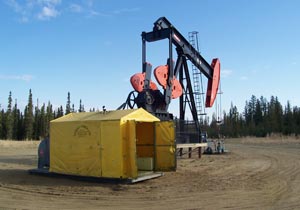
During active drilling, generators power essential operations like mud pumps, rotary equipment, downhole tools, lighting, and safety systems. In production phases, they support artificial lift systems, chemical injection pumps, SCADA equipment, and communications infrastructure.
The rugged nature of Canadian oilfields demands generators that can perform in sub-zero temperatures and endure long runtime cycles. Many rental units come with winter-grade enclosures, block heaters, and automated fuel management systems to keep them running without interruption.
For more on generator standards, visit Natural Resources Canada.
2. Portable Transformers for Voltage Matching
Not all job site equipment operates on the same voltage. Portable transformers allow you to step voltage up or down as required, bridging the gap between generator output and operational needs.
Transformers are critical when deploying 600V equipment from a 480V generator, or vice versa. This is especially common in gas plants, compressor stations, and processing facilities. In remote or brownfield projects, transformers also help integrate temporary systems with partially active infrastructure.
In addition to enabling compatibility, transformers provide a level of power conditioning that helps protect sensitive electronics from surges, fluctuations, and harmonics. This is essential for process automation, metering, and instrumentation equipment, which are becoming increasingly important in data-driven oil and gas operations.
Learn more at CSA Group.
3. Distribution Panels and Cabling
Generators and transformers are only part of the equation. To deliver power safely and efficiently across a job site, a well-designed distribution system is essential. This includes weather-resistant panels, spider boxes for branch circuits, and CSA-certified cabling that can handle heavy-duty loads.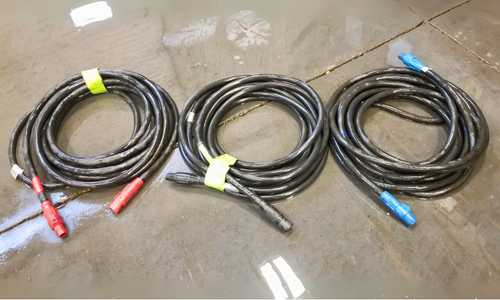
Power distribution must be tailored to the layout of the site—including distance between loads, environmental hazards, and redundancy requirements. Color-coded and labeled cabling makes it easier for electricians to manage power safely, while locking connectors prevent unplanned disconnects.
Properly designed distribution systems also play a role in safety compliance, ensuring that overcurrent protection, GFCI features, and load balancing are all properly configured.
For code compliance guidance, refer to OH&S Online.
4. Backup Power for Emergencies and Grid Outages
Some oil and gas sites, especially those located near existing infrastructure, may rely partially on the grid. However, even in semi-urban areas, grid interruptions are not uncommon due to storms, accidents, or scheduled outages. In these cases, having backup generator rentals ready to engage automatically is key to avoiding costly downtime.
Remote compressor stations, pipeline pump stations, and oil batteries can’t afford unexpected halts. Generators with automatic transfer switches (ATS) can seamlessly take over when grid power fails, keeping systems operational until utility power is restored.
For long-term dependability, backup systems are often paired with high-capacity fuel tanks and monitored via telemetry to ensure fuel availability and maintenance schedules are followed.
Visit Transport Canada for regulations on fuel and backup systems.
5. Frost Fighter Heaters for Winterized Sites
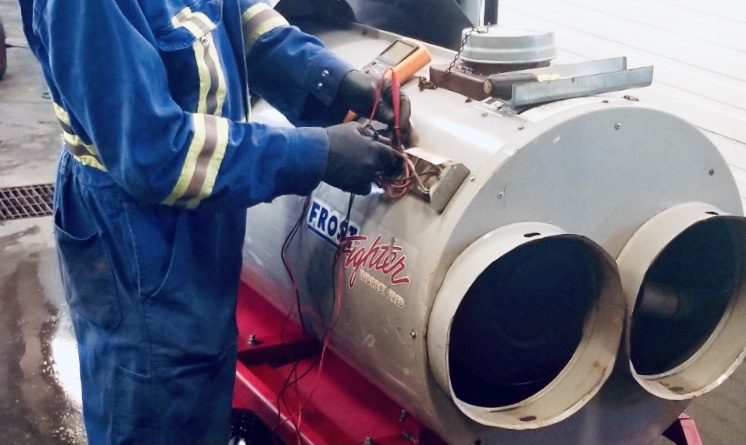 Canadian winters pose a unique challenge to oil and gas operations. Sub-zero temperatures can freeze equipment, slow productivity, and compromise safety. Frost Fighter heaters are portable, diesel-fueled systems designed to deliver warm air to specific zones, ensuring that operations continue even when ambient temperatures plummet below -30°C.
Canadian winters pose a unique challenge to oil and gas operations. Sub-zero temperatures can freeze equipment, slow productivity, and compromise safety. Frost Fighter heaters are portable, diesel-fueled systems designed to deliver warm air to specific zones, ensuring that operations continue even when ambient temperatures plummet below -30°C.
These heaters are typically used in wellhead enclosures, pipe rack tents, and on-site trailers or mobile offices. When paired with insulated enclosures or poly domes, they create controlled environments that protect both people and equipment.
Modern heaters are equipped with thermostatic controls, flame-out protection, and integrated fuel tanks, allowing for safe, autonomous operation with minimal intervention.
6. Lighting Towers for Nighttime or 24/7 Operations
Many oil and gas operations run on 24-hour schedules. Especially during winter months, when daylight hours are limited, light towers play a vital role in maintaining safety and efficiency. They illuminate work zones, equipment yards, access roads, and emergency exits.
Rental light towers often feature LED fixtures with low fuel consumption, hydraulic masts for quick setup, and solar assist capabilities for greener operations. Units with 360-degree lighting coverage are ideal for centralized placement in larger sites.
By ensuring consistent lighting coverage, operators can meet Canadian Centre for Occupational Health and Safety standards while reducing the risk of slips, trips, and falls on uneven terrain.
7. Fuel Management Services
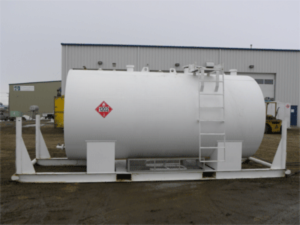 Reliable fuel delivery is as important as the generator itself. Without a dependable fuel management plan, your temporary power system becomes a liability. Rental providers often offer full-service solutions that include double-walled fuel tanks, automated fuel level monitoring, and scheduled refueling programs.
Reliable fuel delivery is as important as the generator itself. Without a dependable fuel management plan, your temporary power system becomes a liability. Rental providers often offer full-service solutions that include double-walled fuel tanks, automated fuel level monitoring, and scheduled refueling programs.
For remote sites, where resupply intervals are long and access is challenging, telemetry-enabled tanks provide peace of mind. Operators can monitor fuel usage in real time and receive alerts when levels drop below predefined thresholds.
Compliance with federal and provincial regulations—such as those from Transport Canada and the Alberta Energy Regulator—is essential. Double containment, proper labeling, and spill prevention protocols all play a role in site safety and environmental responsibility.
Edmonton Spotlight: Temporary Power Hubs in Alberta
Edmonton acts as a logistics hub for Alberta's oil and gas heartland. Its proximity to key energy corridors and resource zones makes it an ideal base for rapid equipment deployment. Whether it's a shale project near Fox Creek, SAGD operation in Fort McMurray, or a pipeline crew in Drayton Valley, Edmonton-based fleets reduce response times and freight costs.
With strong service capabilities, T&T Power Group supports operations across Alberta with regionally based technicians, scalable rental packages, and 24/7 emergency response. Contact our Edmonton hub today.
FAQs About Temporary Power for Oil & Gas
What generator size is typically used for oilfield sites?
Drilling operations may need 500 kW to 1000 kW, while remote camps or SCADA systems may operate on 200 kW to 400 kW depending on load.
Do I need permits to use generators on oil & gas sites?
Yes. Permit requirements vary by province but often include fuel storage, noise levels, environmental emissions, and electrical installation approvals.
Can I get fuel tanks and cables with my generator rental?
Yes. Most full-service rental providers, including T&T Power Group, include panels, cables, transformers, light towers, fuel tanks, and heaters as part of a complete package.
Built for the Demands of Oil and Gas
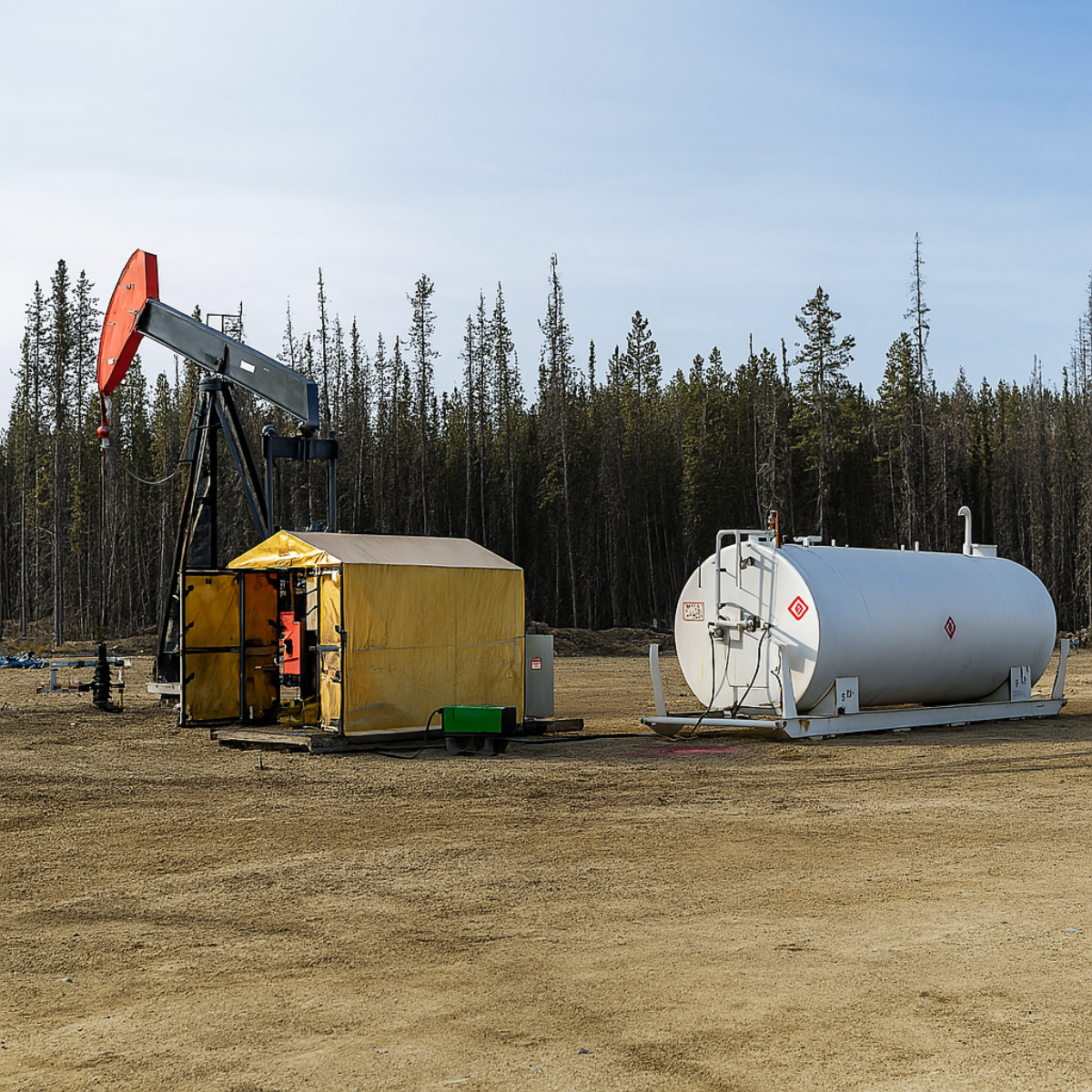 In Canada’s dynamic oil and gas landscape, downtime is expensive and often dangerous. Whether you’re powering up a new well pad, maintaining a pipeline route, or running a remote production facility, temporary power is the backbone of operational continuity.
In Canada’s dynamic oil and gas landscape, downtime is expensive and often dangerous. Whether you’re powering up a new well pad, maintaining a pipeline route, or running a remote production facility, temporary power is the backbone of operational continuity.
With scalable solutions like generator rentals, voltage-matching transformers, robust distribution systems, and fuel management programs, energy producers can operate confidently in even the most remote or rugged locations.
T&T Power Group is proud to support Canada's energy industry with complete temporary power packages tailored for the oil and gas sector.
Need temporary power in Canadian oilfields? Contact us today for a custom rental quote.